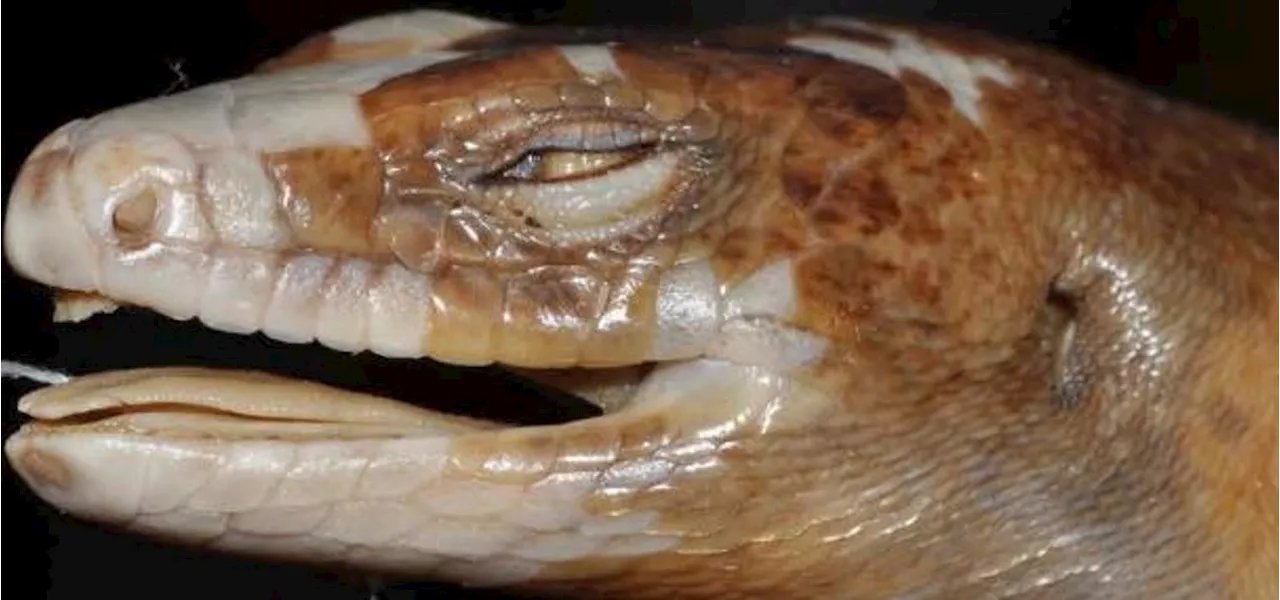I am an American evolutionary biologist with a Ph.D. in ecology and evolutionary biology. I am based at Rutgers University, where I specialize in studying biodiversity, evolution, and genomics.
The giant Tongan ground skink was a remarkable creature, and one with a storied history. Stealthy, solitary and elusive–this lizard, endemic to the Tongan Islands of the South Pacific–was rumored to have special powers by native Tongans. It was said that, when a tribesman spotted the rare, 1.5 foot, sleek-grey predator, something portentous would occur–possibly a funeral.
The species was first documented to science between the years of 1826 and 1829 by two French scientists, Jean-Renee-Constant Quoy and Joseph Paul Gaimard. Quoy and Gaimard traveled aboard the Astrolabe, an exploration ship of the French navy, as it circumnavigated the globe. The naturalists collected the only two specimens of the giant skink in existence, which are now housed in the Paris Natural History Museum.
In 1986, British naturalist John Gibbons offered a reward of 100 Tongan dollars to anyone who could find or photograph the famed skink. His inquiry, which he published in the local Tongan newspaper, turned up no results. Tragically, Gibbons and his family died in a boating accident while attempting to cross the reef at Lakeba in Fiji, before he could return to Tonga and resume his search for the lost species.
The remaining forest area of Tongatapu, comprising only 3% of the entire island, was surveyed in 1993 by scientists George Zug and Ivan Ineich. They, too, were unsuccessful in finding the grey-ghost.for optimism comes from another extinct–and subsequently rediscovered–species of skink: Bocourt’s Terrific Skink or the terror skink. This skink, endemic to the islands of New Caledonia, was thought to have perished for the same reasons as the giant Tongan ground skink.
Another reason for optimism comes from the stealthy nature of the grey ghost. The authors believe that the original discovery, by the French naturalists aboard the Astrolabe, happened during the rainy season when the skinks were forced out of their underground lairs by heavy rains. Gibbons also theorized that the skink lived underground and was active only at night or after very heavy rains.
Tongan Ground Skink Extinct Lizard South Pacific Reptile Remote Habitat Wildlife Conservation Endangered Species Elusive Reptile Biodiversity Preservation Conservation Efforts
United States Latest News, United States Headlines
Similar News:You can also read news stories similar to this one that we have collected from other news sources.
 Anduril delivers first giant ‘Ghost Shark’ spy drone to Australian NavyAnduril has delivered the first of the planned three extra-large autonomous underwater vehicles called 'Ghost Shark.'
Anduril delivers first giant ‘Ghost Shark’ spy drone to Australian NavyAnduril has delivered the first of the planned three extra-large autonomous underwater vehicles called 'Ghost Shark.'
Read more »
 'Grey's Anatomy' Never Should’ve Killed Off LexieA custom image of Chyler Leigh crying as Lexie Grey in Grey&39;s Anatomy
'Grey's Anatomy' Never Should’ve Killed Off LexieA custom image of Chyler Leigh crying as Lexie Grey in Grey&39;s Anatomy
Read more »
 Wednesday's analyst calls: UPS gets an upgrade, Meta Platforms to jump 20% aheadA delivery giant and a social media giant were among the biggest analyst calls on Wednesday.
Wednesday's analyst calls: UPS gets an upgrade, Meta Platforms to jump 20% aheadA delivery giant and a social media giant were among the biggest analyst calls on Wednesday.
Read more »
 Grey's Anatomy Season 21 Renewed To Extend Historic TV RecordMatthew Biggin is a freelance writer and new addition to the Screen Rant team. With experience in freelancing since 2008, Matt has also worked as a screenwriter and script editor, as well as contributing to movie and TV blogs. Based out of London, UK, Matt lives with his wife and twin daughters, whom he enjoys introducing to movies and TV shows.
Grey's Anatomy Season 21 Renewed To Extend Historic TV RecordMatthew Biggin is a freelance writer and new addition to the Screen Rant team. With experience in freelancing since 2008, Matt has also worked as a screenwriter and script editor, as well as contributing to movie and TV blogs. Based out of London, UK, Matt lives with his wife and twin daughters, whom he enjoys introducing to movies and TV shows.
Read more »
 ‘Grey’s Anatomy’ Renewed for Season 21“Grey’s Anatomy” has been renewed for Season 21 at ABC. Creator Shonda Rhimes says she 'can't wait to see' what's in store.
‘Grey’s Anatomy’ Renewed for Season 21“Grey’s Anatomy” has been renewed for Season 21 at ABC. Creator Shonda Rhimes says she 'can't wait to see' what's in store.
Read more »
 Ghost Ship Rubymar Sinks, Damaging Internet Cables and Causing Environmental ConcernsThe Rubymar, a ghost ship, sank after drifting for two weeks, damaging internet cables and causing concerns about potential environmental disaster. The ship's sinking was a result of attacks by Iranian-backed Houthi rebels in Yemen, which have disrupted global shipping. The damaged cables have impacted connectivity for millions of people in East Africa and Vietnam. The ship's trailing anchor is believed to have caused the cable damage.
Ghost Ship Rubymar Sinks, Damaging Internet Cables and Causing Environmental ConcernsThe Rubymar, a ghost ship, sank after drifting for two weeks, damaging internet cables and causing concerns about potential environmental disaster. The ship's sinking was a result of attacks by Iranian-backed Houthi rebels in Yemen, which have disrupted global shipping. The damaged cables have impacted connectivity for millions of people in East Africa and Vietnam. The ship's trailing anchor is believed to have caused the cable damage.
Read more »
